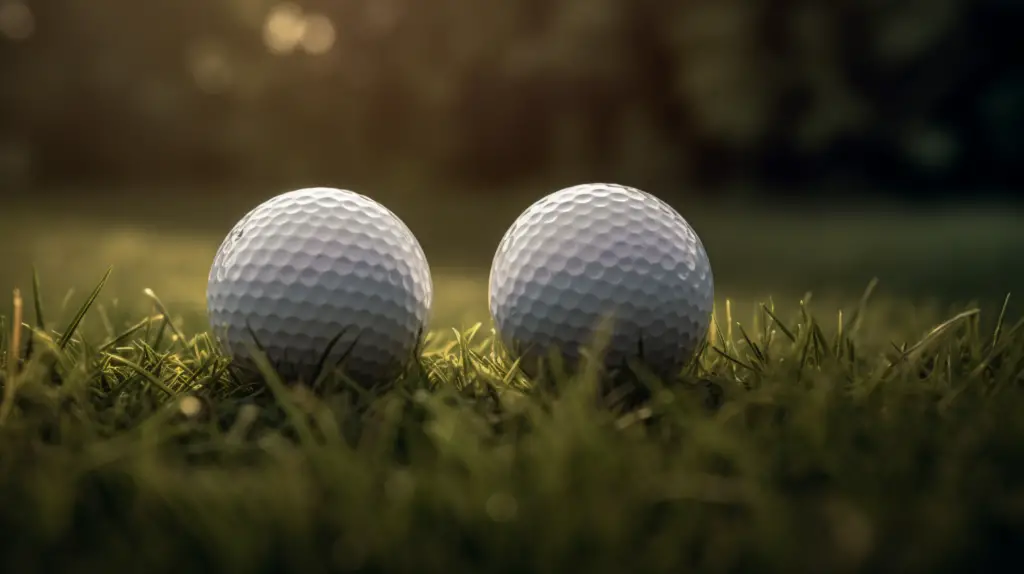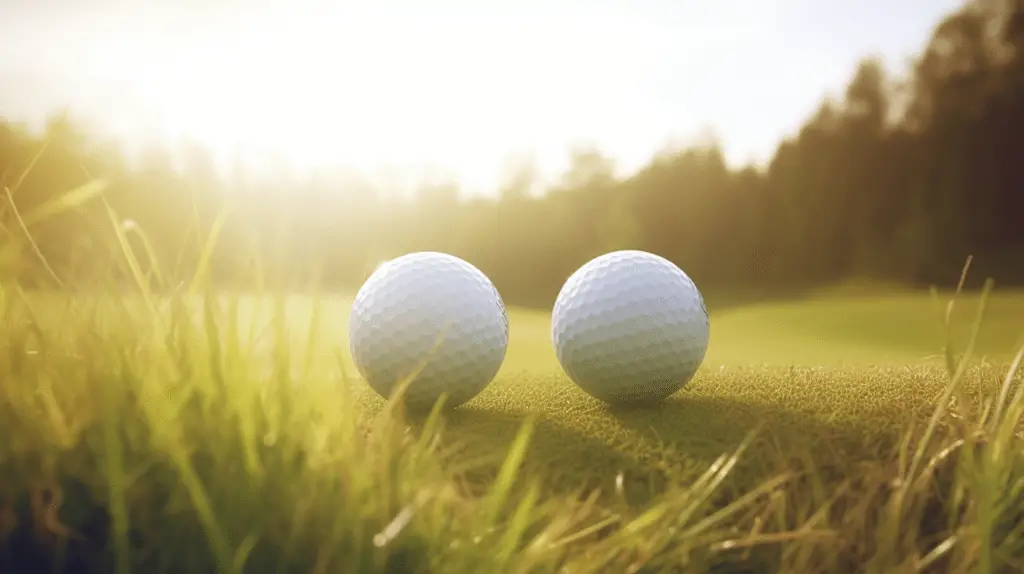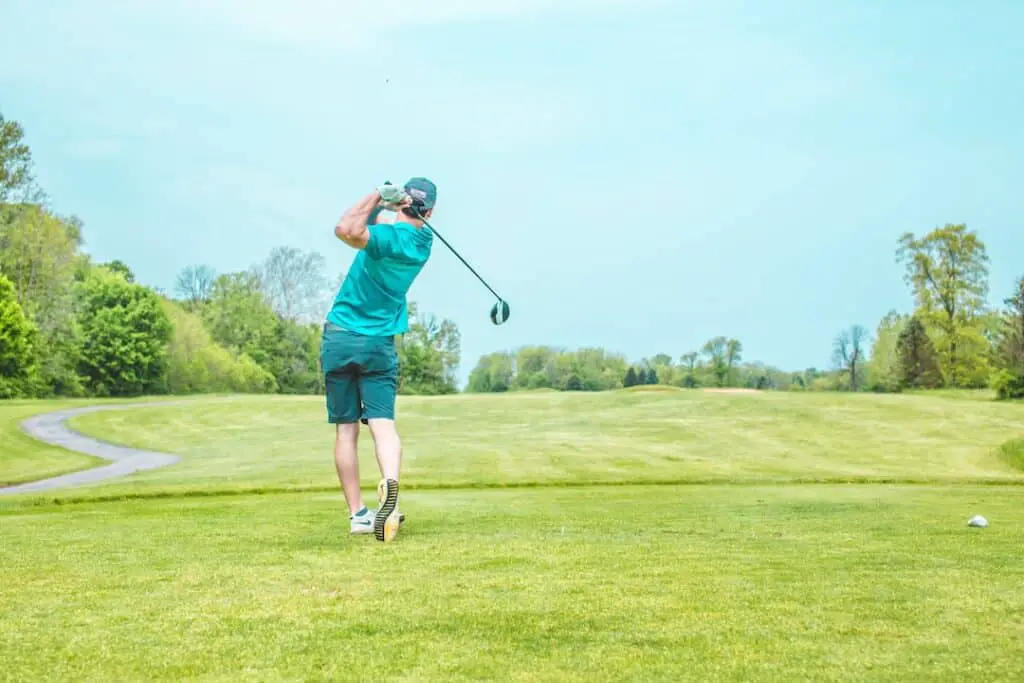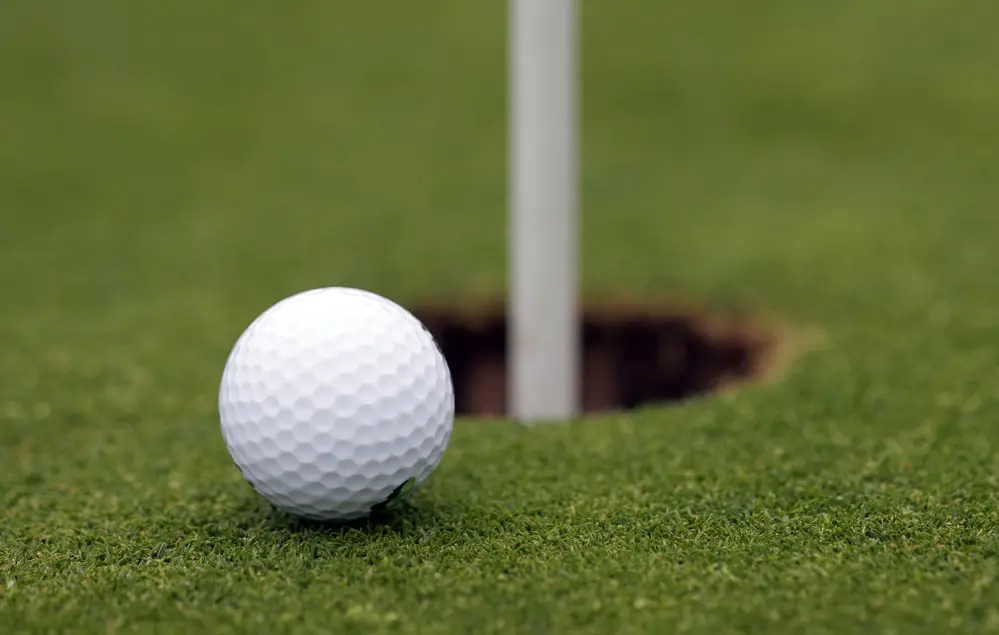Last Updated on November 21, 2023
Golf, a sport known for its precision and etiquette, is filled with intricate rules that can often leave players scratching their heads. One such scenario occurs when your ball happens to collide with another on the course – it’s rare but not unheard of! So what exactly are you supposed to do if you find yourself in this unique predicament? Let’s delve into the world of golfing regulations and uncover the answer.
Different Scenarios Of Golf Ball Impact
During a game of golf, there is always the possibility that one’s ball may collide with another. This can lead to several common situations and raise various rules questions amongst fellow players. Understanding how these scenarios are dealt with in accordance with the official guidelines will enable golfers to make informed decisions on the course.
In most cases, if a player’s ball at rest is struck by another golfer’s ball in motion, no penalty stroke is incurred for either party involved. The player whose stationary ball was hit must simply replace it at its original spot before proceeding. Meanwhile, the individual responsible for striking the moving ball should play it as it lies after coming to rest. However, exceptions do exist when balls come into contact with certain designated hazards or other specific areas of the course. Thus, familiarity with such distinctions proves essential for navigating any given round.
One particularly noteworthy rule revolves around instances wherein a golfer accidentally strikes their own ball while executing a shot. In this instance, they would incur a one-stroke penalty and be required to return their sphere to its initial position prior to taking another swing. By familiarising oneself with these various regulations surrounding ball impacts during play, participants can avoid unnecessary confusion or disputes whilst out on the links.

Restoring The Position Of Displaced Balls
When your ball hits another ball, certain actions must be taken to restore the position of displaced balls and maintain fair play. This process is crucial in ensuring that each golfer has an equal opportunity to make their next shot without interference from previous strokes.
To properly restore the position of displaced balls, consider the following steps:
- Determine whether the entire ball has been moved as a result of colliding with another ball.
- If so, identify if the ball under the rules was at rest or in motion when struck by another ball.
- In cases where both balls were at rest, and one becomes inadvertently moved due to contact with another player’s stroke (such as during putting), the original positions should be restored before continuing play.
- If one or both balls were in motion when they collided, continue playing without restoring any positions; this would be considered part of normal gameplay.
In addition to these guidelines, note that if a movable obstruction causes a collision between two golf balls, then after removing the said obstruction, players should return their respective balls back to their original spots. While taking care to follow these procedures will ensure smooth gameplay for all participants involved in such an incident, keep in mind that there may still be specific situations warranting further review by officials overseeing the match. Do remember that understanding how best to handle collisions between golf balls can greatly enhance overall enjoyment and fairness amongst competitors throughout matches.
Assessing Penalties In Various Situations
This situation can arise in various circumstances and may lead to penalties for the player who caused the collision. Knowledge of these penalties will ensure that players are aware of potential consequences during a match.
If your ball in motion hits another player’s stationary ball at rest or their equipment, you generally incur no penalty if it happens by accident. However, there are exceptions based on specific scenarios. For instance, during stroke play, if this incident takes place on the putting green after both balls were already lying on it, then whoever played first would receive a 2-stroke penalty. In contrast, while playing foursomes or four-ball matches with partners, striking your partner’s stationary ball incurs no penalty but requires you to play from the new spot where your ball comes to rest after colliding with theirs. During match play (singles), hitting an opponent’s object results in a loss of hole – unless they agree otherwise before continuing.

The “Rub Of The Green” Concept
The ‘Rub of the Green’ refers to incidents where a player’s ball is accidentally deflected or stopped by an outside agency, such as another ball, an animal, or even a spectator. According to Rule 6 under The Rules of Golf, if a player’s ball in stroke play comes into contact with another player’s ball at rest on the putting green, there are no penalties for either party.
However, both players must play their balls from where they come to rest after being struck. If one of them was moved out-of-bounds or lost due to collision then only that respective golfer can replay his original ball without penalty and mark its position before lifting it off from the ground.
Importance Of Adhering To Golf Rules
The importance of adhering to the rules in golf cannot be overstated. This is why understanding and following established guidelines, such as Rule 6, are crucial not only for maintaining fair play but also for ensuring a smooth experience at courses like Baytree National Golf Links or Turtle Creek Country Club.
- Hole in match play: In a situation where your ball strikes another player’s ball during match play, you must continue playing without penalty. However, if the other player needs to replace their ball due to damage caused by the impact, they may do so without any penalties.
- Strokes in stroke play: Unlike match play, hitting another player’s ball during stroke play results in a two-stroke penalty. Once the penalty is applied, both players should proceed with their next shots accordingly.
- Programs for golfers: Educating oneself through programs offered by teaching professionals like Daril Pacinella can help amateur and experienced golfers alike understand these complex rules better. For instance, Duran Golf Course offers clinics that cover various aspects of the game.
- Driving range etiquette: Practising proper conduct at driving ranges goes beyond simply avoiding collisions between balls; it also includes being considerate of fellow golfers around you while practising your swing.
In light of this information, one can see how essential it is for golf enthusiasts to closely follow the sport’s regulations – whether participating in casual games at local clubs or engaging in high-stake tournaments worldwide. By doing so, we all contribute towards fostering an environment where everyone enjoys themselves whilst preserving fairness and camaraderie within our beloved pastime.
Conclusion
In conclusion, one can’t always avoid those rather unfortunate encounters between golf balls on the green. It’s important to be well-versed in handling these delicate situations with grace and sportsmanship.
Advancements in technology may soon lend a helping hand in managing such incidents, but for now, let us embrace the quirks of this beloved sport whilst keeping our heads held high and our swings steady.



